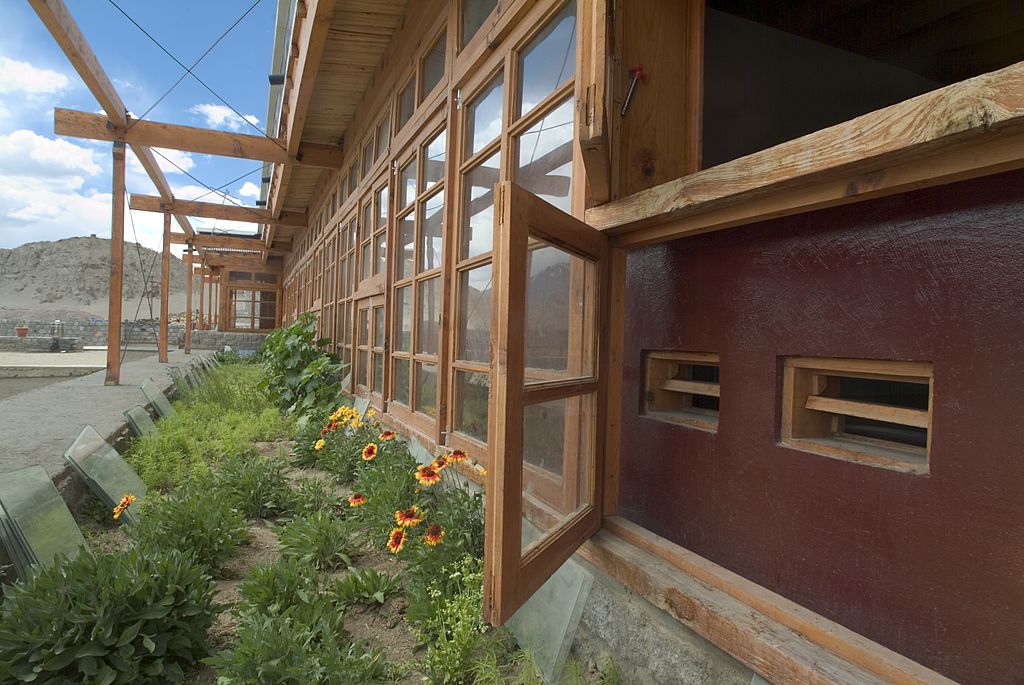In the scorching heat in a town near Delhi, Jyoti Pandey rode her scooter packed with takeaway meals. Halfway through her day delivering food to customers, she collapsed from heat exhaustion in the 46°C (114°F) weather. Jyoti awoke in a hospital bed recovering from heat stroke, but she felt little relief without air-conditioning due to a city-wide power outage.
Jyoti’s story is a common one. This year, India saw the hottest spring temperatures since 1901. Last year, climate change triggered deadly heatwaves, large-scale flooding and forest fires. The relentless heat and record humidity have an outsized impact on people required to work outdoors most of the day, like rickshaw pullers, construction workers and street vendors.
The need for cooling, and access to sustainable cooling solutions, is paramount. Passive cooling and efficient building strategies are two paradigm-shifting innovations, especially when created by those inheriting a warming world: the younger generation.
In the past few decades, our response to extreme heat has been air conditioning. However, this solution is limited to those who can afford it – only around 10% of India’s population. We need sustainable cooling in India.
As India’s GDP grows, so too will its purchasing power for air conditioners. This demand risks creating recurring blackouts on a power grid that is already strained from the growing energy needs of existing technologies.
Most vulnerable to the record-breaking humidity and heat in India are the 323 million urban and rural poor with limited or no means of adaptation. Up to three-quarters of India’s workforce is exposed to outdoor heat daily. When the next heatwave occurs, they can either show up to a job in potentially life-threatening conditions or forfeit their daily wage, an impossible decision.
[Link src="https://www.energymonitor.ai/all-newsletters/" title="Keep up with Energy Monitor: Subscribe to our weekly newsletter" font-size="20px"]Our current approach to cooling, one that relies heavily on high-energy appliances, creates unjust impacts on people and communities lacking economic power. How do we transition to an equitable, cool world?
Designing buildings for efficient energy use and thermal performance will reduce demand and lower the need for cooling power. Passive strategies like natural ventilation, cool roofs and insulated walls create a cooler built environment, while more trees, water bodies and reflective pavements create a more heat-resilient community.
This holistic approach to cooling buildings and bringing relief to communities directly benefits the 323 million workers in India at high risk of heat, like Jyoti. Yet these transformative strategies haven’t scaled. Many real estate developers lack an awareness of energy-efficient construction and sustainable design practices. Creative, practical ideas from student teams can be the catalyst for changing the industry for the better.
Today’s design and construction practices lock in long-term inefficiencies and avoidable emissions, forcing younger generations to face an increasingly severe climate. Traditional air conditioners cool the indoors at the cost of further warming the outdoors since units push heat outside. Add the super-polluting refrigerants used in those units, along with the emissions of generating additional electricity to run them, and we get a vicious feedback loop warming our planet. Plus, nearly three-quarters of India's power for the last fiscal year came from coal, often dubbed the 'dirtiest fossil fuel' due to its high carbon dioxide emissions.
The future workforce, those growing up with firsthand knowledge of deadly heat waves, are uniquely positioned to advance innovative and cohesive cooling solutions. Speaking candidly, they give us hope.
Sustainable cooling in India
Students can engineer a more sustainable climate for themselves and future generations by mitigating the extreme heat through resilient building design. If academia feeds into this positive view of solutions with education and funding to new sustainable sectors, technologies like clean cooling and net-zero building design will get a much-deserved spotlight.
Solar Decathlon India is one initiative already proving this theory. In just three years, student teams collectively worked on 45 million square feet of new buildings that could avoid 20 million tonnes of carbon dioxide emissions. A team from the Jindal School of Architecture in Delhi partnered with the Society for Human Welfare & Education to design a new campus. The school, which has educated underprivileged children for free since 1997, is getting a net-zero makeover.
Student teams design net-zero energy and water buildings by partnering with real estate developers and building owners. These innovative technologies can catalyse an ecosystem shift to resilient, affordable buildings and benefit India's ability to stay on track with climate commitments.
The potential reach of clean cooling is seemingly limitless.
India’s rapid urbanisation and fast-growing building sector offer an untapped, albeit narrowing, window of opportunity to lead other nations in climate adaptation. India has long been a frontrunner in cooling with its National Cooling Action Plan launched in 2018 and Ahmedabad’s pioneering heat action plan, which guides municipal and comprehensive cooling policy.
Policies and practices for heat-resilient communities, thermally efficient buildings and innovative infrastructure developed in India can help inform best practices worldwide. Today’s youth – the students – can play a pivotal role in laying the foundations for an ecosystem shift toward lower climate-impact buildings.
If we get cooling right, the world can avoid 100 gigatonnes of carbon dioxide-equivalent emissions over the coming decades. Investing in our youth and research institutions is investing in a liveable future.
As associate director for the ClimateWorks Foundation's Clean Cooling Collaborative, Sneha Sachar accelerates sustainable cooling in India and supports the mission to advance sustainable cooling for all. As director of Solar Decathlon India, Prasad Vaidya provides leadership, inspiration and oversight to manage the challenge.









